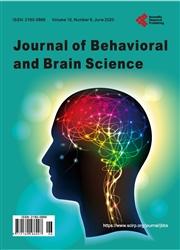A Functional Inhibitory Role of Habenular Glucagon-Like Peptide-1 (GLP-1) in Forebrain Reward Signaling
引用次数: 3
Abstract
There is emerging evidence implicating glucagon-like peptide-1 (GLP-1) in reward, including palatable food reinforcement and alcohol-based reward circuitry. While recent findings suggest that mesolimbic structures, such as the ventral tegmental area (VTA) and the nucleus accumbens (NAc), are critical anatomical sites mediating the role of GLP-1’s inhibitory actions, the present study focused on the potential novel impact of GLP-1 within the habenula, a region of the forebrain expressing GLP-1 receptors. Given that the habenula has also been implicated in the neural control of reward and reinforcement, we hypothesized that this brain region, like the VTA and NAc, might mediate the anhedonic effects of GLP-1. Rats were stereotaxically implanted with guide cannula targeting the habenula and trained on a progressive ratio 3 (PR3) schedule of reinforcement. Separate rats were trained on an alcohol two-bottle choice paradigm with intermittent access. The GLP-1 agonist exendin-4 (Ex-4) was administered directly into the habenula to determine the effects on operant responding for palatable food as well as alcohol intake. Our results indicated that Ex-4 reliably suppressed PR3 responding and that this effect was dose-dependent. A similar suppressive effect on alcohol consumption was observed. These findings provide initial and compelling evidence that the habenula may mediate the inhibitory action of GLP-1 on reward, including operant and drug reward. Our findings further suggest that GLP-1 receptor mechanisms outside of the midbrain and ventral striatum are critically involved in brain reward neurotransmission.Habenular Glucagon-Like Peptide-1 (GLP-1)在前脑奖赏信号传导中的功能抑制作用
越来越多的证据表明胰高血糖素样肽-1 (GLP-1)参与奖励,包括美味食物强化和基于酒精的奖励回路。虽然最近的研究结果表明,中边缘结构,如腹侧被盖区(VTA)和伏隔核(NAc),是介导GLP-1抑制作用的关键解剖部位,但本研究的重点是GLP-1在表达GLP-1受体的前脑区域habenula中的潜在新影响。鉴于缰状核也与奖赏和强化的神经控制有关,我们假设这个大脑区域,像VTA和NAc一样,可能介导GLP-1的快感缺乏效应。大鼠定向植入以缰为靶点的引导套管,并按PR3进行性强化计划进行训练。单独的大鼠接受间歇获取的酒精两瓶选择范式的训练。GLP-1激动剂exendin-4 (Ex-4)被直接注射到habenula中,以确定对美味食物和酒精摄入的操作反应的影响。我们的结果表明,Ex-4可靠地抑制了PR3的反应,并且这种作用是剂量依赖性的。对酒精消费也观察到类似的抑制作用。这些发现提供了初步和令人信服的证据,证明缰可能介导GLP-1对奖励的抑制作用,包括操作性和药物奖励。我们的研究结果进一步表明,中脑和腹侧纹状体外的GLP-1受体机制在脑奖励神经传递中起关键作用。
本文章由计算机程序翻译,如有差异,请以英文原文为准。
求助全文
约1分钟内获得全文
求助全文

 求助内容:
求助内容: 应助结果提醒方式:
应助结果提醒方式:


